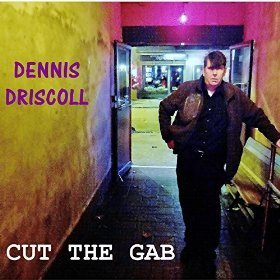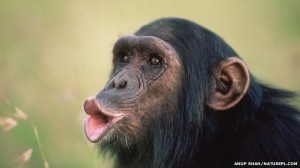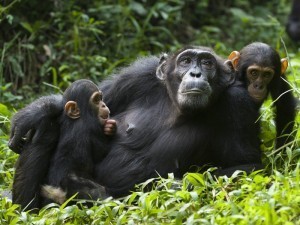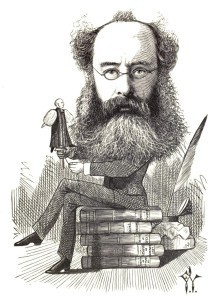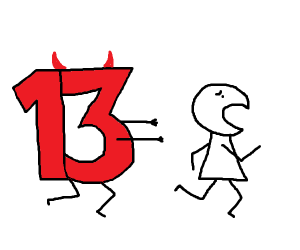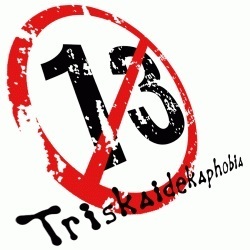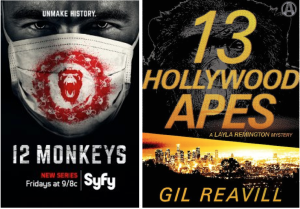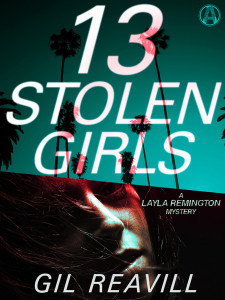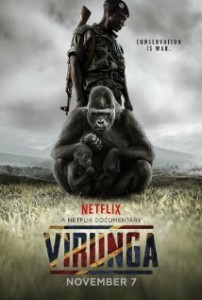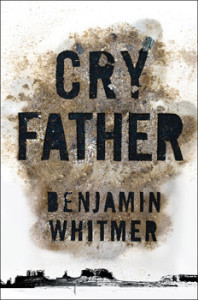Gil Reavill's Blog, page 2
April 18, 2015
Grab the Gab
Cut the Gab, Dennis Driscoll (Upstate Manhattan Recordings)
Inwood may be the last legit neighborhood in Manhattan, way up on the northern tip of the island and relatively untouched by gentrification. Spoken word wizard Dennis Driscoll is the poet laureate of Inwood. He’s well known as an opening act for Television, the seminal rock band, spinning vignettes of dope and degradation to set up the audience for Tom Verlaine and company. His new album Cut the Gab paints a drop-dead-funny, etched-in-acid portrait of New York City street life, a stinging follow-up to his superb first CD, the uptown classic Inwood Stories.
[image error]
Dennis Driscoll at the mic, with Glen Hansard (“Once”) kneeling beside him on the guitar, at The Scratcher in NYC.
The tales Driscoll tells come out of the delightfully seamy tradition of Jim Carroll, Hubert Selby, Jr., John “Gringo” Spacely and Lenny Bruce. “First Shot” is an account of the artist’s introduction to the glories of heroin at a very early age, as a member of the “junior junkies” in the neighborhood. “It’s not easy to cop when you’re thirteen,” observes Driscoll. The drug of choice switches to LSD on “Saturday Afternoon,” wherein the listener meets scabrous (and scabby) characters on a jaunt to Central Park. Curtis “used to drop acid and play roller hockey—he was a goalie,” an image that effectively foxes the mind. Another lysergic soul, George, “thought he was a tree: he used to stand at the entrance of Fort Tryon Park with his arms raised, like branches.” No one who has experienced “Red on the Noodle” will forget the picture of a lice-infested “clinker” street pigeon flying through the air on fire. Other Cut the Gab tracks represent precise slices of urban reality, like “Chinese Rocks,” which opens, “In 1972 the face of heroin changed in New York City.” On “The Wrong Bum,” Driscoll reports that in the early Eighties, the last car on the A-train subway line served as a sort of club car, where the transit cops never ventured. “There’d be gigantic parties, people smoking weed, people from all over the City… playing boom boxes, just partying and really enjoying the ride.”
All the readings are helped along by dreamy trance riffs by a crack group of musicians, composed by the author and produced by Masters of Reality veteran (and Queens of the Stone Age producer) Chris Goss. Behind his relaxed, dead-pan voice, Driscoll plays bass on all but one track. Though much of the CD was recorded in the California desert, at the famed Rancho de la Luna in Joshua Tree, Cut the Gab is a New York City creation all the way. With it, Dennis Driscoll assumes his place as one of the great clear-eyed chroniclers of the Manhattan underbelly.
Available on iTunes and through Amazon.
April 16, 2015
Feminist Chimps
The gulf between facts and bias always looms large when dealing with the great apes. Gorillas have bedeviled the human imagination since they debuted on the world stage in the 19th century, eventually spawning movies like King Kong and Mighty Joe Young that emphasized their chest-beating fearsomeness. Yet they are gentle giant herbivores who are mostly pacific (with, by the way, some of the smallest penises in the animal kingdom). By contrast chimpanzees have been consistently cast as clowns (Bonzo, Cheetah, Bubbles), even though they are in reality omnivores who war, eat flesh and kill.
Now new research featured in an article in the NY Times gives us something new under the sun—an evolutionary argument that chimpanzees developed the first egalitarian, proto-feminist society, spurred on by certain vicious hunting practices. Making the situation all the more egregious is that the targets of this style of hunt are the darling, sweet-featured bush babies, small fellow primates who look like they come out of a Keene painting.
Observation of the Fongali band of chimpanzees, a group about thirty strong who live in the savannah-woodland environment in southeastern Senegal, shows that female chimps are more involved in the hunt than elsewhere. Juveniles participate, too. And the use of tools is prevalent: snapped off tree branches used to jab the bush babies out of their dens. The chimps will then grab the prey, said lead author of the study, Jill D. Pruetz of Iowa State University, and immediately “bite the head off.”
The big chimpanzee males who normally dominate hunting activities don’t have the evolutionary advantage here. So the bush-baby killers seem to have established a more blue-state kind of vibe, with females and children well integrated into the hierarchy.
April 13, 2015
Ebola’s Unheralded Victims
Last fall’s Ebola epidemic dominated public attention for its deadly impact on humans in West Africa and, to a much lesser degree, elsewhere. Left unmentioned in most news reports was the toll the virus has taken on the world’s severely threatened populations of great apes. According to one 2011 study, a third of chimpanzees and gorillas living in the wild have died from Ebola. But real evidence of the plague’s extent is lacking. There’s also limited knowledge of the total wild chimp population: the best the WWF can do is a classic “cable guy estimate,” somewhere between 150,000 to 250,000. The numbers are likewise inexact for the four subspecies of gorillas, which total around 120,000 in the wild. If Ebola has really taken away a third of these great ape populations, that’s upward of 50,000 chimpanzee deaths and 40,000 dead gorillas. By comparative numbers, 25,591 humans were infected in 2014 Ebola outbreak, with 10,602 deaths.
Already ravaged by hunting and habitat destruction, the great apes can look ahead to their total extermination in the wild. Since breeding programs in captive populations are tapering off, in the coming decades the extinction of humankind’s closest primate relatives is a real possibility. To add to the sting, an effective vaccine to inoculate chimps and gorillas against the Ebola virus is presently available but remains unused.
It recalls a line in a W.S Merwin poem, the voice of humanity addressing the extinct species of the animal kingdom: “Tell them it is we who are important.”
March 31, 2015
See You At Thrillerfest X
This year’s Thrillerfest, the premier gathering for enthusiasts of crime literature, mysteries, pulp fiction, whodunits, page-turners and stirring sockdolagers, gathers fans and writers at the Grand Hyatt in New York City, July 7-11. Organized under the auspices of an outfit called International Thriller Writers (ITW), the conference is labeled Thrillerfest X because this is the tenth time these particular birds have flocked together. The august Nelson DeMille (Plum Island, The General’s Daughter) will be honored as 2015′s “Thrillmaster.”
I’ll be there with bells on, since my crime novel 13 Hollywood Apes is nominated as a finalist in the Best E-Book Original category of ITW’s Thriller Awards. So wish me luck and I’ll see you there!
March 20, 2015
The Completists
There are a few writers that, if you read one of their books, you’ve got to read them all. There’s something compulsive about it. Other writers can attract for a book or two, but the completists demand your devotion. John Steinbeck was the first of these for me. I read his Red Pony novella when I was in junior high. In high school some poets, T.S. Eliot, W.S. Merwin, Sylvia Plath. Plus Ursula Le Guin, Robert A. Heinlein and J.R.R. Tolkien. I plowed through all of Dickens and then most of Tolstoy in a rush. Doris Lessing. Later on it was the classic noir writers, like Patricia Highsmith, James M. Cain, Jim Thompson, Hammett and Chandler. Patrick O’Brian’s Aubrey–Maturin series. Then Alan Furst, Philip Roth, others I’m not calling to mind right now. Lately it’s been Anthony Trollope. I hesitate to confess that I never dipped into him before, and am equally hesitant to declare him great, he’s so wrong-headed politically and creakily patrician concerning social relationships. Trollope’s world is all above-stairs Dukes and Duchesses. His causal anti-Semitism is an ugly stain on his escutcheon. He’s a fox-hunting enthusiast, for pity’s sake, a cruel activity that I loathe. Trollope is the direct opposite of all that’s currently hip in literature. But for all that I find him engrossing. There is something sneakily modern about his approach to the world. He’s more hard-headed than Dickens (they were contemporaries). And on money he’s relentless: “Of all novelists in any country, Trollope best understands the role of money. Compared with him even Balzac is a romantic.” — W. H. Auden
March 3, 2015
Triskaidekaphobia
Since I’ve been out with the “13″ series of crime novels, starting with 13 Hollywood Apes (and, soon, continuing with 13 Stolen Girls, and then, after that, 13 Under the Wire), I’ve had a lot of people ask about the source of the mythology that surrounds the number. I grew up thinking thirteen was unlucky, but I can’t recall any specific instruction, example or reason for it. It was just, somehow, in the air, one of those cultural inheritances that you don’t know how you came by. My father was born on November 13, and we’d always mark the times that his birthday fell on Friday the 13th. Superstitions such as this (“knock on wood” was another one) were more or less goofs that no one took very seriously, just something to relieve the shrieking boredom of growing up in small town Wisconsin.
Some people take 13 seriously enough. I recall marveling at high-rise buildings that skip the 13th floor in their numbering systems. Such a structure employs all the elements of modern engineering science and would be the wonder of the ancient (superstitious) world. In fact, it couldn’t be built and wouldn’t continue to stand without adherence to the principles of rationalism and science. Yet somehow its owners or builders or whoever it is decides these things bow to a comical logical fallacy in numbering the building’s floors. Perhaps those responsible don’t even know the source of the superstition. Hotels are prone to this, citing the fact that “some guests might be uncomfortable” if they were lodged on the thirteenth floor.
The source of triskaidekaphobia, as the fear of thirteen is called, can’t be nailed down precisely. It is a quirk of the West, largely, with other cultures citing other numerals as bad omens. (In Italy, however, thirteen is sometimes seen as lucky.) Commentators cite several conflicting theories as the source of the mythology. One I especially like, since Christianity and triskaidekaphobia seem to go hand in hand, are the thirteen seats at the Last Supper. But there might be a pagan connection, too, as the rare years with thirteen moons might trouble a lunar-based society. There are thirteen menstrual cycles in a year, and thus some matriarchal cults may have venerated the number, leading patriarchal Christians to suppress it. A relatively late spin on the whole business is paraskevidekatriaphobia, fear of Friday the 13th, a product of the last couple hundred years.
Sometimes 13 is just a number. In all but a general, vestigial sense, I am not a sufferer of either paraskevidekatriaphobia or triskaidekaphobia. For 13 Hollywood Apes, 13 Stolen Girls and 13 Under the Wire, the numeral serves simply as a convenient handle, a mild sort of “boo!” to get a reader’s attention. Buy the books, and when they’re successful, there might be thirteen entries in the 13 series.
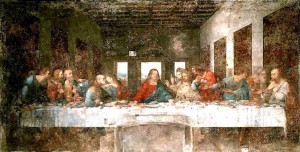
Leonardo’s unlucky thirteen
February 19, 2015
Synchronicity in the City
Syfy Channel hype for its 12 Monkeys series (off the 1995 Willis-Pitt classic) is all over New York City, on the sides of buses, billboards, in subways. Thirteen Hollywood Apes missed it by one count and one species (or maybe it’s the Syfy channel that missed it). But I’m still thinking… could there be some sort of subliminal spillover?
February 13, 2015
Art on the Next Layla
February 9, 2015
Virunga
A solid, heart-rending documentary that demonstrates the most effective way to preserve African wildlife is to address the social and political upheavals of the continent. And while we’re at it, work to curb the insane and immoral weapons traffic that floods the world’s hotspots with assault rifles, RPGs and land mines. And also while we’re at it, block the blood market in precious metals, rare earth minerals and precious gems that helps support the criminal armies of the Congo. Conservation is war. Available on Netflix.
January 28, 2015
Scott Montgomery’s Top Ten Mysteries for 2014
Mystery People is a store-within-a-store, a mystery mecca sited within Austin’s Book People independent bookstore, one of the best in the country. Scott Montgomery runs it, and he’s a superb appreciator/promoter of crime fiction. He’s put up his year’s best here.
1. Cry Father by Benjamin Whitmer. 2. The Hollow Girl by Reed Farrel Coleman. 3. The Fever by Megan Abbott. 4.A Swollen Red Sun by Matthew McBride. Tied for 5. The Drop by Dennis Lehane (already a movie with a screenplay by Lehane) & The Poor Boy’s Game by Dennis Tafoya. 6. The Last Death Of Jack Harbin by Terry Shames. 7. The Forty-Two by Ed Kurtz. 8. The Forsaken by Ace Atkins. 9. The Blood Promise by Mark Pryor. 10. After I’m Gone by Laura Lipman.
This is the best best-of list I’ve seen so far. Pounce.

